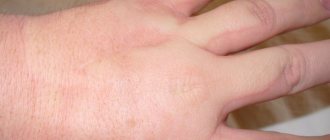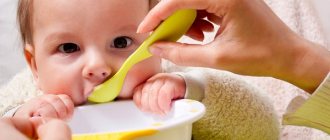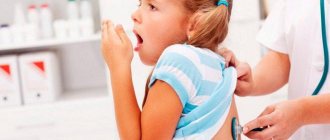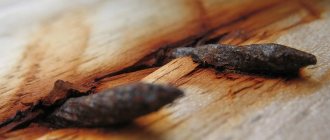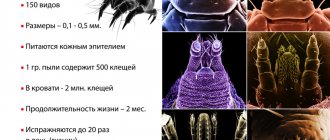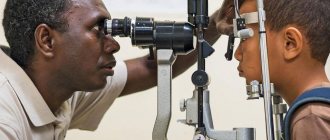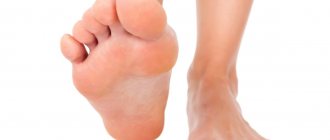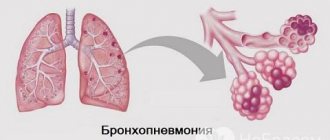Allergies in young children manifest themselves in the form of rashes and redness on the skin, runny nose, dyspeptic disorders - nausea, diarrhea, vomiting. Antihistamines, glucocorticosteroids, and enterosorbents are used in the treatment of the disease. Before treating allergies in young children, the doctor identifies the allergen that causes the baby to develop negative symptoms. In some cases, this is not possible, so all the efforts of allergists are aimed at preventing pathology through a course of taking pharmacological drugs, making changes to the diet and strengthening the immune system.
The right approach to treatment
Most often, a rash on the cheeks of a newborn and infant means that an allergen has entered the body along with mother's milk. In response to such an “invasion,” the immune system begins to produce antibodies for comprehensive protection. After eliminating a certain product from a nursing woman’s diet, redness and rashes on the child’s face disappear without a trace. Most often, an allergic reaction is provoked by seafood, citrus fruits, and wild berries.
But a child’s imperfect immunity often causes the development of allergies to pollen, poplar fluff, pet hair, and household chemicals. Particular difficulties in treating children under three years of age lie in the impossibility of accurately identifying the allergen. In this case, parents should be very careful, noting changes in diet after which the child developed a rash. Redness on the skin often occurs after acquiring a pet or buying new toys. Following medical recommendations will help relieve allergy symptoms:
- Heavy carpeting and decorative pillows should be removed from the room, and it is better to replace upholstered furniture with wooden furniture made from environmentally friendly materials;
- after visiting the street, you must take a shower, rinse your mouth and nose with clean water to remove allergic agents;
- the dog or cat will have to be given into good hands if the cause of the allergy is animal fur;
- during walks, you should avoid visiting places where plants are planted that provoke an allergic reaction in the baby;
- Every day you need to wipe open surfaces in the room with a damp cloth soaked in plain water.
Allergic rash is diagnosed much more often in children living in small and large cities. Doctors attribute this to rare contacts with natural allergens, as well as unfavorable environmental conditions, which in no way contribute to the formation of immunity. A relationship has long been discovered between frequent cleaning with household chemicals and the development of individual intolerance in newborns and children. A sterile indoor environment and bathing children several times a day often trigger the development of allergies.
During walks, children should not walk in parks and squares where plants grow that provoke the development of allergies.
Types of allergies
There are several types of allergies, which are classified depending on the pathogen:
| Food | This type is very common among infants, and a reaction to one or more foods predominates. |
| Respiratory (respiratory) | Inhalation route of entry into the child’s body. |
| Dust | This type of allergy is classified into a separate category due to the fact that the body reacts exclusively to mites in dusty air. |
| Hay fever | The irritant is pollen, seasonality is one of the main signs, the disease coincides exactly with the flowering period and goes away immediately after it |
| Allergy to insects (the medical term is insect allergy) | A mosquito or midge bite can be the root cause of the disease. Very often, such an allergy is indicated by excessive swelling after a bite, which develops very quickly |
| Allergy to animals | The allergen is cats, dogs and other pets, their drool, skin scales, feathers, fluff, excrement |
| Medicinal | Reaction to the medication or any of its components |
| Presence of helminths in the body | Worm infestations often provoke the development of allergies |
Food
Most often, provocateurs are citrus fruits (grapefruit, oranges, tangerines) or red berries, some types of meat, and dairy drinks. Soda with a flavor enhancer and coloring is no exception - it is better not to give such drinks to a child.
Up to the age of three, babies may have a reaction to lactose. The root causes of food allergies include intestinal dysbiosis - a change in the species composition of bacteria in the intestine, which results in microbial imbalance.
Respiratory
This type is characterized by unpleasant sensations in the nasopharynx, including suffocation. Caused by odors, flowering plants, and animals with long hair.
Reactions can also occur to wall paint and mold. May trigger the development of bronchial asthma.
Helminthic
It is provoked by waste products of helminths, which are released into the blood. The disease occurs in a more severe form and is difficult to treat.
Immunotherapy or SIT therapy
The only method that can cure a child’s allergies forever has been developed quite recently. Allergen-specific therapy is indicated for children who have been diagnosed with acquired allergies due to excessive cleanliness in the premises or low body resistance to allergic agents. This method of treatment is used only in children from three years of age, since it is from this age that doctors have the opportunity to accurately identify the allergen:
- pollen;
- bird feathers;
- organic or inorganic chemical compounds;
- house dust;
- fur of rodents, cats, dogs.
Immunotherapy is rarely used when diagnosing food allergies to cow protein - in most cases it refers to congenital pathologies. Before starting to treat an allergy, a series of laboratory tests are prescribed to accurately identify the allergen. It is then administered to the child in microscopic doses. The allergist carefully monitors the baby’s reaction so that if an overly pronounced sensitization process develops, he can be given an antihistamine.
The treatment procedure is carried out in a special room equipped with bactericidal lamps to ensure maximum sterility, until the last symptom of the pathology disappears. Gradually, the doses of the allergen are increased so that the child’s body develops tolerance and does not react to the foreign protein. The effectiveness of therapy is higher when it is carried out immediately after the discovery of the allergen. Allergic rhinitis and bronchial asthma respond especially well to treatment using this method.
Immunotherapy is the only treatment that helps to permanently get rid of allergies in children
Infancy and childhood
An important point is breastfeeding. Cow's milk is a strong allergen and its use instead of breast milk can cause food allergies. The introduction of complementary foods should be strictly according to age. Parents need to ensure that their baby does not accidentally receive a product that is inappropriate for their age or that is an allergen.
It is important to maintain a hypoallergenic environment at home. Plus, it’s worth remembering that children’s soft toys are a convenient place for house dust mites to live. You need to either limit their number or wash them regularly.
In childhood, preventive vaccinations are necessary, but this is carried out only against the background of complete health. Violation of the norms and rules of vaccination can lead to excessive stress on the immune system and contribute to the development of allergic diseases.
Any medications must be used strictly as prescribed by the attending physician and in accordance with the prescribed dosage. Excessive amounts of medications and their frequent self-administration can cause the development of drug allergies. Refusal to take medications and, as a result, a protracted course of the disease also negatively affects the immune system and can provoke the development of allergies. You should never neglect contacting a specialist in a timely manner.
Therapeutic diet
Changes in diet are necessary not only when diagnosing a child’s allergy to sweets. A properly formulated diet helps strengthen the baby’s defenses and promotes the timely removal of allergens from the body. Including foods high in coarse fiber (vegetables, fruits, cereals) in your baby’s daily menu allows you to avoid the use of enterosorbents in treatment. There is a natural cleansing of the gastrointestinal tract from allergic agents, toxins, and toxic compounds. The result of proper nutrition is:
- strengthening the immune system;
- normalization of digestion and peristalsis;
- restoration of intestinal microflora.
Only a doctor composes the daily menu.
To cure food allergies in a child, you should not only exclude harmful foods from the diet, but also prevent the formation of a deficiency of proteins, fats, carbohydrates, and biologically active compounds in the body. The doctor draws up a menu taking into account the calorie content of the dishes, the baby’s need for certain nutrients, his age and weight. The physical activity of children is also important. If a child plays sports, then the calorie content of his daily menu is much higher than that of someone who likes to spend time at the computer or reading books.
To treat a developed allergy to sweets, you should completely exclude confectionery products from the diet. The doctor will recommend products that can replace sweets, gingerbread, and cakes. Usually, allergists recommend giving your baby dried fruits (raisins, dried apricots, prunes) or special bars with sweeteners - muesli with dried berries, nuts, healthy seeds. One treat per day is usually enough to reduce your child's sugar cravings.
If your baby is diagnosed with a sweet allergy, the doctor will help you choose food products that replace cakes and pastries.
Preventive measures
The prevention of allergic diseases includes periodic changes in climatic conditions: trips to the sea (sea air), to the forest, to the mountains. Regular exposure of the baby to fresh air and sun helps prevent and cure allergic reactions. Additionally, mud therapy, carbon and mineral baths are prescribed.
For food allergies, one of the methods of effective treatment is strict adherence to a diet that excludes allergenic foods, but the mandatory presence of essential vitamins and minerals in food. Milk can be replaced with fermented milk products, and dietary meats can be used.
Daily morning exercises, rubbing with a cool towel, walks in the fresh air, and good nutrition will help strengthen the body's defenses.
Similar articles
DeteyLechenie.ru
The rapid growth of technology leads not only to the progress of civilization, but to changes in the environment. A large amount of industrial emissions and exhaust gases are released into the atmosphere. The house is filled with foreign odors of various compounds that make up household chemicals. All these changes disrupt the functioning of the body's defense systems.
The first to suffer is the immune system, which is designed to remove harmful agents from the body. Malfunctions in the immune system lead to the recognition of harmless substances as potentially dangerous. Allergic manifestations are an excessively expressed reaction of the body to ordinary surrounding substances.
Treatment of allergic rhinitis
The development of allergic rhinitis in children is often indicated by nasal congestion and constant discharge of clear fluid from it. This symptomatology is especially typical in spring and summer, during the budding season of flowers, shrubs, and trees. Most often, for the treatment and prevention of the disease, the allergist prescribes not only systemic antihistamines, but also nasal sprays with similar therapeutic activity:
- Cromohexal,
- Lecrolin,
- Cromoghlin.
The active ingredient of medicines is cromoglycic acid. The use of nasal sprays allows you to stabilize the membranes of basophilic granulocytes and prevent the penetration of the trace element calcium into them. Even a single use will help eliminate runny nose and nasal congestion. All drugs with cromoglicic acid are used only for allergies with mild clinical manifestations. If the reaction occurs rapidly, doctors include local agents with glucocorticosteroids in the therapeutic regimen:
We recommend reading:
How to treat diarrhea in a child under one year old
- Tafen,
- Nasonex,
- Flixotide;
- Avamis,
- Flixonase.
These hormonal drugs have numerous contraindications and serious side effects, so they are used only in short therapeutic courses. In the treatment of allergic rhinitis, frequent rinsing of the nose with isotonic sodium chloride solution or preparations based on it - Rinosol, Aqua Maris, Aqualor, Physiomer - is of great importance. For the procedure in infants, only nasal drops should be used. The use of a spray will cause the allergen to spread into the upper and then lower respiratory tract. If there is severe nasal congestion, vasoconstrictors (Tizin, Dlyanos, Galazolin) will help ease the baby’s breathing for 3 to 5 days.
Hormonal antihistamines are used to treat allergies in children with severe symptoms
Traditional methods of treating allergies
Medicinal herbs are used very successfully in the treatment of allergies. Baths and compresses are recommended for infants; after a year, decoctions can be added.
- Baths with a decoction of medicinal herbs. Chamomile and string give a good effect; yarrow, calendula, and celandine are suitable. Bring one tablespoon of herbs to a boil, leave for 30 minutes, strain and squeeze. Add to bath.
- Herbal compresses relieve pain, itching, and redness. Soak a soft cotton cloth in the broth from the previous recipe and apply to the affected areas for half an hour.
- Decoctions of medicinal herbs cleanse the blood, strengthen the immune system, and reduce the body's sensitivity to foreign substances. The most popular is nettle decoction: boil three tablespoons of dry herb with one liter of water, leave for 30-40 minutes, strain, give the child 50 g of decoction 2 times a day before meals. You can also use decoctions of chamomile, rose hips, celandine, and calendula. But it is necessary to remember: decoctions of medicinal herbs must be given to the child at the same time, constantly, for at least two to three months.
- Shilajit is one of the most popular and effective folk remedies for treating allergies. Dissolve 1 g. in a liter of boiled water. Remember: if the product is of high quality, the solution will be uniformly dark and opaque. Children under three years old should take 50 grams, before seven years old – 70 grams, after seven years – 100 grams. every day for three weeks.
- Grind the dried film of a boiled chicken egg and add a pinch to food daily. You can also eat crushed egg shells, especially quail eggs. Use until symptoms of the disease are completely eliminated.
- Caps are honeycomb caps that bees use to cover honey. This bee product has helped many. But do not forget that honey is considered an allergenic product, so you need to use honey for treatment very carefully, starting with small doses and monitoring the body’s reaction. The product can be added to tea or simply chewed like gum for 10 - 15 minutes. The effect is observed after a month of use, and in 7–8 months you can completely get rid of the disease.
- Half an hour before meals, give the child a piece of refined sugar, onto which drop a few drops of bay oil or fennel oil.
- Green juices (parsley, dill, green onions), celery root, and cauliflower help in treating allergies. To make them easy for your child to drink, you can mix them with green apple juice. A mixture of juices from carrots, beets, parsley and cucumber gives a remarkable effect. Of course, these products are also useful to eat in their natural form.
- When treating allergic rhinitis, you can use aloe juice, lemon juice, and sea salt solution.
Antihistamines
The use of antihistamines in solutions or tablets will allow you to treat allergies in a child. These drugs are not able to eliminate the cause of the pathology, but quickly cope with its symptoms - rash, rhinitis, swelling. When choosing medications, the doctor must take into account their safety for children. The fact is that almost all antihistamines, even with proper treatment, cause drowsiness. This property is especially characteristic of first-generation drugs synthesized several decades ago. These include:
- Suprastin,
- Tavegil,
- Pipalfen,
- Fenkarol,
- Diphenhydramine.
Side effects often occur after using modern drugs, but their severity is much lower. To treat allergies in infants on the face or body, Loratadine in tablets, Zodac and Zyrtec in solution for internal use are most often prescribed. If, after taking antihistamines, the child constantly sleeps and refuses to eat, then the parents should inform the doctor about this. The allergist will replace the product with a safer one or adjust the daily dosage. Antihistamines not only relieve swelling and inflammation of the skin, but also prevent a new round of allergic reactions.
Classification of allergic skin rashes
Before talking about skin allergies in a child, you should imagine the types of rashes. Depending on the antigen, an allergic reaction appears in the form of formations on the skin of different nature and localization:
- pustule - a cavity formation with pus inside;
- plaque is a flat neoplasm that is located just above the skin level;
- papule - a raised bump on the skin, the size of which does not exceed 5 mm;
- spot - an area of skin with clear outlines of a changed color (white, pink or red) that does not protrude above the surface of the skin;
- vesicle - a cavity not exceeding 5 mm, with liquid inside;
- vesicle is a large vesicle.
Allergic spot on the skin
Allergy symptoms are expressed differently, that is, the same type of reaction manifests itself in different ways. For example, in one child, food allergies manifest as dermatosis of a certain area or the entire body, other children begin to sneeze, cough, and if the immune system is particularly sensitive, more serious manifestations are possible - symptoms of Quincke's edema, Lyell's syndrome, anaphylactic shock and other pathologies. Therefore, treatment of the disease requires meaningful and deliberate treatment.
The most common types of skin rashes are:
- contact dermatitis;
- atopic dermatitis;
- childhood eczema;
- nettle rash;
- neurodermatitis;
- angioedema;
- bullous dermatitis.
Diathesis in an infant
Contact dermatitis
Contact dermatitis is a disease that affects the upper layers of the skin. Allergy symptoms occur due to the effect of an antigen on the immune system. The pathology affects children from the first year of life, and even adolescents.
Important! Contact dermatitis affects the arms, legs, neck, back, buttocks, that is, areas of the body in contact with clothing, and symptoms of the disease can rarely be seen on the face.
Most often, symptoms of pathology are observed in young children, since immunity has not yet been fully formed. The disease can appear for any reason, but most often due to the negative influence of the environment. Parents need to carefully maintain cleanliness in the house and monitor the child’s personal hygiene, otherwise they will have to spend a long time treating the baby.
Symptoms of contact dermatitis:
- skin hyperemia, swelling;
- rough and flaky skin;
- purulent vesicles;
- unbearable sensations of itching, burning.
Contact dermatitis symptoms and treatment
Atopic dermatitis
Atopic dermatitis is an inflammatory disease due to a skin reaction to a toxic substance. The pathology is difficult to treat and often goes from an acute state to a chronic form.
Article on the topic: Manifestation of an allergy to honey, what causes an allergic reaction?
Each age group develops rashes of different types and locations. For example, one-year-old babies are prone to rashes on the face, arms and legs, while older children are prone to rashes in skin folds, feet or palms.
If a rash appears on the scalp of a child, the pathology is called seborrheic dermatitis, and the treatment of seborrhea differs from the treatment of allergies. Symptoms of an allergic disease can be seen on the genitals, mucous membranes and organs of the gastrointestinal tract.
Characteristic symptoms of atopic dermatitis:
- severe swelling;
- redness, peeling, itching of the skin;
- exudative nodular rash;
- dry and cracked skin;
- the formation of scarring crusts on the skin.
Allergies are most often a consequence of the body's food reaction, but pets, dust and inappropriate cosmetics or detergents also provoke symptoms of atopy.
It is important to know! Atopic dermatitis is often accompanied by pathologies of the digestive tract or other organs and systems. In these cases, the allergist refers the child to other specialists for treatment.
How to treat atopic dermatitis in children
Childhood eczema
Eczema is an inflammation of the epidermis, which is characterized by symptoms such as:
- hyperemia;
- unbearable itching sensation;
- a large number of bubbles that merge with each other and subsequently open;
- the appearance of ulcers that crust over after the vesicles open.
Often the development of eczema in a child occurs along with atopic dermatitis. Both diseases are chronic and recurrent in nature, the treatment is almost the same.
Need to remember! The appearance of eczema is promoted by allergies, which are hereditary in nature, and dysfunction in the gastrointestinal tract and immune system.
Hives
The disease is of allergic origin; small attacks occur in young children, and over time the disease develops into a chronic disease.
Symptoms of the pathology are spots from light pink to bright red, surrounded by a border, which itch very much, causing discomfort to the child, since he still cannot restrain himself.
Severe itching causes blisters to appear. The rashes burst when touched and resemble erosions. In this situation, a careful approach to treatment is essential.
Allergies in the form of hives appear after taking potent medications, contact with animals, detergents and cosmetics, dust, cold, and ultraviolet radiation.
Often, allergy manifestations are complemented by gastrointestinal diseases, parasitic infestations, and viral or bacteriological infections.
Urticaria in infants: symptoms and treatment
Neurodermatitis
If a child suffered from diathesis before the age of one year, it is possible that neurodermatitis will appear after 2 years. Neuroallergic disease occurs periodically, and for remission to last longer, effective treatment is required.
If small bumps of light pink color are detected on the child’s skin, especially with the formation of scales and pigment spots, and they bother the baby with severe itching, then be sure that treatment for neurodermatitis will be required.
Limited neurodermatitis
Quincke's edema
Quincke's edema is an acute allergic reaction manifested in the form of swelling of the skin and swelling of the mucous membranes. The anomaly requires emergency treatment, otherwise death cannot be avoided.
Article on the topic: How to get rid of allergies - the best remedies
Swelling forms on the arms, legs, palms, feet, and lips. Swelling in the mouth makes it difficult to speak and interferes with eating. Swelling of the pharynx, which manifests itself as asphyxia, is especially dangerous, therefore, at the first symptoms of Quincke's edema, it is necessary to call an ambulance.
Quincke's edema in children
Bullous dermatitis
The name of the scientist who first described the condition is included in the name of the disease - Lyell's syndrome. Symptoms of the pathology: the appearance of blisters, swelling and inflammation of the skin. Bullous dermatitis is a dangerous condition; the person suffering from the symptoms feels severe itching. In addition, multiple allergic rashes resemble burns.
Attention! Just like anaphylactic shock, the symptoms of Lyell's syndrome are fatal, therefore, without delay, you need to call rescuers and begin treatment. Allergies to medications contribute to the manifestations of the disease, and if you consult a doctor as early as possible, trouble can be avoided.
Bullous dermatitis
Ointments and gels
It is necessary to treat any allergic rash not only with systemic antihistamines, but also with external agents. This is especially true for young children who suffer from unbearable itchy skin. No matter how the parents ask the child to be patient, the baby still begins to scratch the inflamed areas, injuring them in the process. Small wounds and cracks form on the skin, where pathogenic bacteria quickly penetrate. In this case, the help of both an allergist and a dermatologist is required. To relieve skin itching on the arms, face, back and tummy, ointments and gels that are safe for children are used:
- Fenistil,
- Psilo balm,
- Gistan.
They exhibit anti-inflammatory and analgesic activity, and most importantly, eliminate skin itching. Such antihistamine ointments are effective at the initial stage of the pathological process, for example, when a baby develops an allergy in the cheeks after eating strawberries. Ointments with dexpanthenol (De-Panthenol, Bepanten) also help well. They soothe irritated skin and promote rapid healing. But if the allergy affects not only the cheeks, but also spreads to the baby’s entire body, the use of stronger external preparations containing hormones is required:
- Elokom,
- Advantan,
- Triderm,
- Afloderm,
- Flucinar.
These antihistamines are prescribed only by a doctor, as they can cause side effects. In no case should you exceed the doctor-recommended frequency of applying ointments and gels to the skin of a child, especially a newborn or infant, due to the risk of accumulation of hormonal drugs in the body.
In the treatment of allergies in a child, external antihistamines are used to heal the skin and eliminate itching.
Diagnosis of allergies
It is not easy to determine the provocateurs of childhood allergies, since at a young age the range of irritants is large. Particular attention is paid to the noticed symptoms, their development, and diet.
Keeping a diary with a description of the household environment, manifestations of allergies, and their frequency is mandatory. The tendency to allergies in relatives and friends is determined - heredity plays an important role.
Timely diagnosis of a painful condition consists of a set of measures:
| Recognizing symptoms | Some non-allergic diseases (for example: bacterial or infectious) can manifest as undoubtedly similar to an allergic reaction |
| Determination of risk factors | The next step after identifying obvious signs of allergy is to identify the causes of the reaction. |
| Diagnosis in laboratory conditions | Helps identify the allergen more accurately, despite taking medications. |
To establish an accurate diagnosis, different methods are used:
- General blood analysis. If there are helminths in the body, the number of eosinophils is increased, which can cause an allergic reaction.
- Skin allergy tests - the irritant is applied to the forearm; if a reaction occurs, the allergen is considered specific.
- A test that provokes a reaction when a food irritant is introduced under the tongue.
If a child is predisposed to allergies, irritants and reactions to them may change at different ages. For example, in children, the body may react violently to a new product. Growing up a little, a reaction to odors or ragweed blooms may appear.
In adolescence, a cosmetic product (gel, cream, varnish) can be an allergen. Symptoms may also change. Therefore, diagnostics are necessary for every manifestation of an allergic reaction. An allergic reaction can also occur in a newborn. In this case, it is necessary to look for the irritant in the mother’s diet, and by eliminating it, relieve the baby from unpleasant symptoms.
Enterosorbents
Children with digestive and peristalsis disorders, accompanied by the death of intestinal microflora, often become allergic. This condition leads to a sharp decrease in defenses and a violent reaction of the immune system to the penetration of allergic agents into the body. A course of enterosorbents will help normalize the functioning of the gastrointestinal tract:
- Polysorb,
- Polyphepan,
- Activated carbon,
- Enterosgel.
Enterosorbents bind toxic compounds, toxins, and allergens on their surface, and then are excreted unchanged from the body. After 10-14 days of treatment, the rash on the child’s face disappears, as does nasal congestion with a runny nose.
How does a child's allergies manifest?
Symptoms vary and depend on the type of allergen and individual reactions. Here's how different organs and systems react to allergens:
- Leather. With allergies, the skin turns red, itches and flakes. Spots, rashes, and sometimes swelling appear.
- Eyes. They itch, turn red, itch. The child's tears flow.
- Respiratory system. Most often there is an allergic runny nose, nasal congestion, cough, and it becomes difficult to breathe.
- Stomach and intestines. Allergens cause stomach pain, vomiting or diarrhea.
With allergies, the most dangerous thing is anaphylactic shock - a condition in which the tongue, neck or face swells, the voice becomes rough, and difficulty breathing occurs. The person turns pale, has poor spatial orientation and may lose consciousness. In this case, you need to immediately call an ambulance.
Recipes from traditional healers
Infusions of medicinal herbs will help treat allergies in infants and older children. They are indicated exclusively for external use - baths, compresses, lotions. Chamomile, string, and St. John's wort contain flavonoids, organic acids, vitamins and microelements. Biologically active substances accelerate tissue healing and have anti-inflammatory and antiseptic effects. Baths with infusions of medicinal plants can be used for bathing children under one year old, while simple rubbing of the skin or compresses are more suitable for older babies.
The herbal remedy should be prepared according to the following recipe:
- Pour 4 tbsp into a ceramic container. spoons of dry vegetable raw materials and pour in two glasses of boiling water.
- Leave for an hour, then strain and bring the volume to two liters with boiled water.
You can pour the infusion into a bathtub or wipe your baby’s inflamed skin with it. To make a compress, you need to moisten a sterile napkin in the herbal remedy, apply it to areas with an allergic rash, secure with a bandage and leave until completely dry. Treatment of urticaria and atopic dermatitis in a small child with folk remedies is carried out only after consultation with a doctor.
Allergies, especially with skin clinical manifestations, are difficult to tolerate for children of any age. Therefore, parents should make an appointment with a doctor when the first symptoms develop. The sooner treatment is carried out, the greater the chances for a complete and rapid recovery of the child.
Prevention of allergic reactions
If your baby is predisposed to allergic diseases, the following preventive measures must be observed:
prolong breastfeeding as much as possible; exclude food allergens; introduce complementary foods carefully, according to the pediatrician’s recommendations; frequently carry out wet cleaning; exclude smoking indoors; limit the child’s contact with animals; use hypoallergenic household chemicals and cosmetics for baby care. The natural hypoallergenic laundry detergent Soap Nuts has proven itself; select underwear and clothes for the baby from natural materials; regularly carry out antifungal treatment in the premises.
Doctor pays attention
At an early age, the results of allergy tests may be false negative, which is due to the property of allergic reactions to occur after prolonged (sometimes many years) contact with an irritant. Temperature with allergies is an uncharacteristic phenomenon. Fever against the background of an established diagnosis may indicate concomitant inflammation. Temperature may also indicate a viral allergy, when the body reacts to infection with a virus not only with an immune response, but also with an allergic reaction. If the diagnosis of an allergy in a child is in question, then rashes, dyspeptic symptoms and fever may indicate an infectious disease in the baby. You can relieve itching due to allergies in a small child using a series of safe anti-inflammatory and sedatives. The series can be taken orally, bathe the child in a bath with a decoction of herbs, or lubricate the affected areas of the skin with it.
